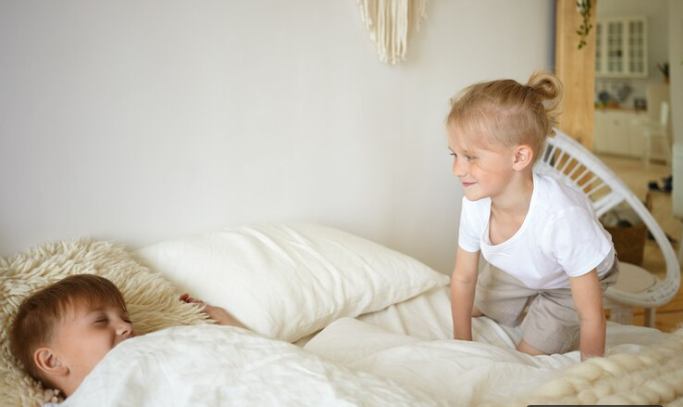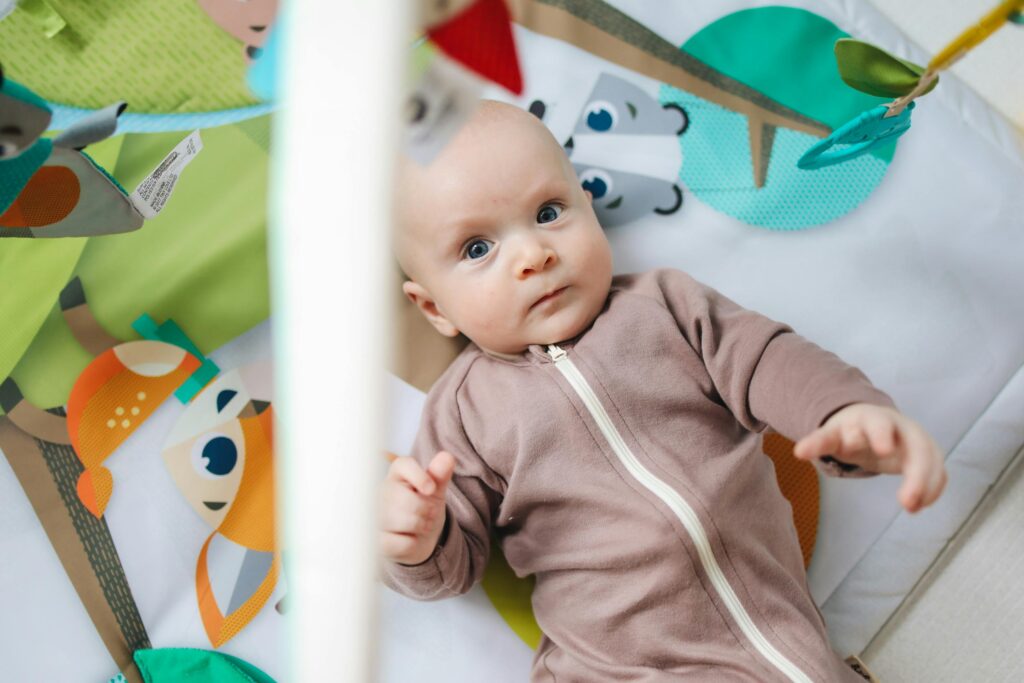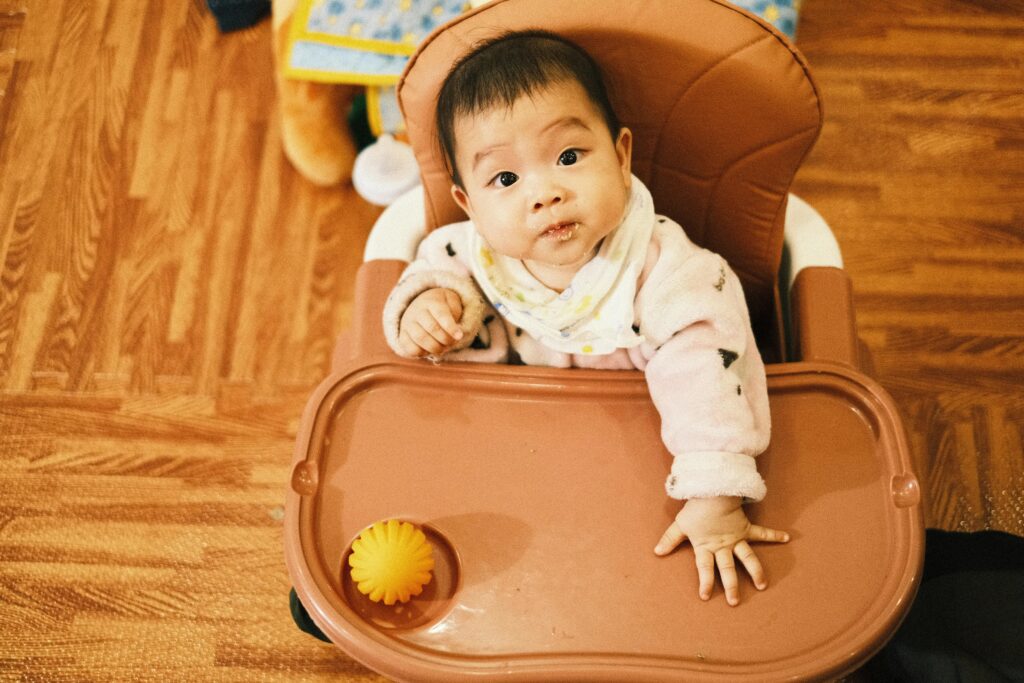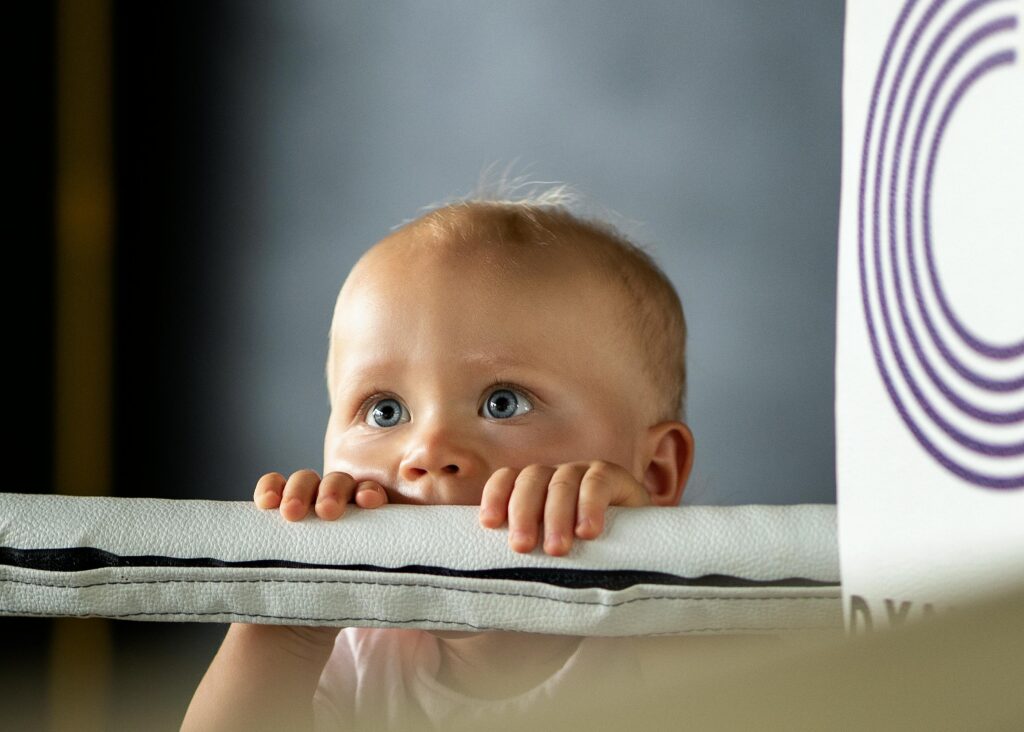Raising twins is an incredible journey filled with double the love, laughter, and—let’s face it—challenges, especially when it comes to sleep. If you’re struggling with the idea of sleep-training twins, you’re not alone. Sleepless nights and the constant worry of waking one twin while trying to settle the other can leave you feeling exhausted and overwhelmed. But don’t worry—this guide is here to simplify the process and address every concern you might have.
Whether you’re asking yourself, should newborn twins sleep together, how to prepare sleep-training twins in the same room, or how long twins can share a crib, this guide will offer you the necessary practical advice on how to get you and your little ones restful nights.
Understanding Sleep Training for Twins
Before discussing strategies, let’s discuss what sleep training is. Sleep training is teaching babies how to self-soothe and develop patterns of sleep, so they do it on their own. And with twins, well, you’re managing two little people with totally different personalities, sleep needs, and temperaments.
The good news? Sleep training twins is possible with the right approach, which is key: consistency and method tailoring towards your family dynamic.
Common Challenges Parents Face
Waking Each Other Up
- You might wonder, can newborn twins sleep together without disturbing one another, or how can sleep train twins in the same room? The reality is, that twins can adapt surprisingly well to each other’s noises with time and the right environment.
Different Sleep Patterns
- One might be a good sleeper, and the other may wake up a lot. It can be challenging to synchronize their schedules but is not impossible.
Sleep-Deprived Parents
- Simplifying two babies and a sleep-deprived life just sounds overwhelming. With a proper plan, you can get your nights back.
Step-by-Step Guide to Sleep Training Twins
Step 1: Create a Consistent Routine
Babies thrive on routine, and it’s especially important for twins. A predictable schedule helps regulate their internal clocks and makes bedtime smoother.
- Wake-Up Time: Start the day at the same time for both twins, even if one wakes up earlier.
- Feeding Schedule: Feed them together or back-to-back to avoid mismatched hunger cues.
- Bedtime Routine: Incorporate calming activities like a warm bath, storytime, or lullabies before putting them down.
Step 2: Sync Their Schedules
Synchronize nap and bedtime schedules when sleep-training twins. It may be tempting to let one nap longer than the other, but this can create mismatched sleep cycles. Instead:
- Wake both twins at the same time in the morning.
- Gradually align naps by waking the sleepier twin earlier.
- Feed them at the same time to help regulate hunger and tiredness.
Also Read: Food Allergies in Babies: Best Guide of 2025
Step 3: Establish an Ideal Sleep Environment

A comfortable sleeping place is required; more so if sleep training twins in the same room.
- Dark Room: Install blackout curtains for no light; melatonin secretion is triggered at night.
- White Noise: A white noise generator helps the twin babies overcome some disturbances while relaxing both babies.
- Separate Sleep Places: Ideally, ensure every twin baby gets to lie on their respective cribs or baby beds with reduced disturbances.
Step 4: Use Gentle Sleep Training Techniques
There are a number of techniques for sleep training twins. Here are a few that work well for twins:
- Gradual Fading: Gradually taper your participation at bedtime, teaching them to self-soothe.
- Ferber Method: Periodically check on them at gradually longer intervals, soothing them but not developing a habit.
- Chair Method: Sit beside their cribs and each night withdraw farther and farther from the crib.
Step 5: Be Patient with Night Wakings
During the first few nights, expect setbacks. It’s common for one twin to wake the other. Here’s how to handle it:
- Comfort Quickly: Respond promptly but keep interactions brief and calming.
- Focus on Self-Soothing: Encourage both twins to fall back asleep on their own.
- Don’t Separate Unless Necessary: Most twins who are asleep adjust well to sleeping in the same room with time.
What to Do When One Twin Sleeps Better Than the Other

It is not unusual for one twin to be a good sleeper and the other to be not. Balancing their needs is very important to prevent frustration.
1. Personalize Sleep Strategies
If one twin needs more soothing, then adjust your strategies. For example:
- Use the chair method for the fussier twin: sit by the crib and then gradually move away.
- Let the independent sleeper fall asleep on his own without over-intervening.
2. Balance Parental Attention
Avoid inadvertently putting all your attention on the more challenging twin. Alternate which parent puts each baby to bed so that both can feel loved.
3. Utilize Their Connection
Allow twins to soothe each other by keeping them together. Often, their connection helps the fussier twin settle more quickly.
How to Handle Sleep Training at Different Ages
“Sleep training twins” can be referred to as applicable to any baby age. Now, let’s discuss some hints for different ages:
Sleep Training Newborn Twins
• Follow their natural sleep cues and feed on demand.
• Make sure they have a safe, comfortable sleeping space.
• Use swaddles to make your newborn twins feel safe.
Sleep Training 2-Month-Old Twins
• Start building a daily routine.
• Try to encourage self-soothing methods, placing them drowsy but awake.
Sleep Training 6-Month-Old Twins
• At this stage, babies usually sleep through for longer periods of time without requiring nighttime feeding.
• Introduce some sleep training techniques, such as gradual extinction or Ferber.
Sleep Training an 18-Month-Old
• Toddlers tend to fight bedtime due to their increased sense of independence. A consistent routine with clear expectations helps.
• Provide a comfort object such as a soft toy or blanket to give the extra feeling of security.
Also Read: Speech Milestones of Infants to Toddlers
Advanced Sleep Training Tips for Twins

For parents who want to fine-tune their sleep training, these advanced tips can take your strategy to the next level.
1. Quiet Time Before Bed
As your twins grow older, a dedicated “quiet time” before their bedtime routine can help them unwind and transition to sleep more easily. This is particularly helpful when sleep training twins in the same room as it ensures both are calm before bedtime.
2. Track Sleep Regression Patterns
Observe when the regressions take place. Many parents notice disruptions in sleep during times such as crawling or teething. You can be ready for these periods and thus better equipped to act accordingly. If one twin is waking up from pain caused by teething, they might disturb the other as well. Keeping track of the patterns helps you manage the “twins sleeping together” effectively.
3. Utilize Technology to Track Progress
Apps and baby monitors with tracking features can help you analyze sleep patterns and pinpoint areas for improvement. Some will even record details like “newborn twins sleeping” schedules, night wakings, and naps.
Twin Sleep Essentials: Must-Have Products
The right tools make a world of difference when it comes to “sleep training twins.” Consider the following essentials:
1. White Noise Machines
As mentioned earlier, white noise machines can be game-changers. They help block out external noise and create a womb-like environment that soothes twins, making them feel as if they are back together in the womb. These are particularly helpful when you’re figuring out “how to sleep-train twins in the same room.”
2. Cribs or Bassinets for Twins
Many mothers have always wondered, “Can twins sleep in the same bassinet?” or “Should twins sleep in the same crib?” Newborn twins can share a bassinet or crib temporarily but investing in separate sleep spaces early on is safer and promotes better sleep. Options include:
• Twin Bassinets: Designed to keep “newborn twins asleep” close but safely separated.
• Convertible Cribs: These cribs grow with your babies, transitioning from infancy to toddlerhood, offering a practical and long-term solution for “beds for newborn twins.”
3. Blackout Curtains
To create the perfect sleep environment, invest in blackout curtains. They block out natural light, which is particularly helpful for daytime naps. This is an essential item for ensuring “twin sleep” consistency during the day.
4. Sleep Sacks

Sleep sacks or wearable blankets keep babies cozy and safe, eliminating the risks associated with loose blankets. If you’re wondering “Should newborn twins sleep together” with blankets, the answer is no—opt for sleep sacks instead.
Additional Tips for Long-Term Success
1. Gradual Room Transitions
If one twin chronically disrupts the other, you may even need to make a transition out of the same room. One way to phrase this is first to separate twins for napping and then keep one twin separated at night in a different room. This more gradual approach to transitioning can sometimes be helpful to overcome “sleep train in same room” concerns.
Also Read: Best Baby Nutrition in the First 1000 Days
2. Teach Self-Calming
Self-soothing is an essential skill for sleep training. Put your twins in their sleep spaces drowsy but awake, encouraging them to settle independently. This is a very important practice for maintaining “twinning sleep” harmony and ensures they don’t rely solely on external help to fall asleep.
3. Prioritize Consistency Over Perfection
Remember, no plan is perfect, and setbacks are normal. If one twin regresses or their routine is disrupted due to travel or illness, stay consistent with your efforts and gradually get back on track.
Final Thoughts: Twins and Sleep Training Success
Sleep training twins can be intimidating, but remember that consistency, patience, and the right strategies can make all the difference. Challenges like how to sleep train twins in the same room or “should newborn twins sleep together” require flexibility, but the rewards—a well-rested family—are well worth the effort.
By tomorrow, your twins will be resting soundly as you continue their healthy sleep habits. No worries about newborn twin sleeping problems for you! They don’t even give you any thought about how best to set a bed for your newborn twins. Sweet dreams for you and them!
Follow for more.












